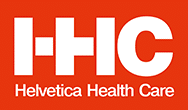What are the different types of Nucleic Acid Extraction Techniques in molecular diagnostics?
In 1953, an important discovery of the double helix structure of deoxyribonucleic acid (DNA) by James Watson, Rosalind Franklin and Francis Crick made huge waves in medical science. The study of DNA structure has since inspired many advancements in genetic science, especially in the field of molecular diagnostics or testing.
Over two decades, the study of the human genome has branched out into domains such as genetic analysis and engineering, antibody therapies, gene therapies, and genome sequencing, all of which are the pillars of modern biotechnology.
The helix structure comprises two long chains of single nucleic acid molecules, also known as nucleotides, entwined around one another. There are two classes of nucleic acids:
- Deoxyribonucleic acid (DNA) and
- Ribonucleic acid (RNA) acid.
DNA and RNA molecules serve as the storehouse of vital genetic information in living organisms. DNA is made up of double nucleotide strands that complement one another. A single strand of DNA is used to create one nucleotide strand of RNA.
Studying extracts of nucleic acid molecules reveals the nature of the stored information, how the information is transferred and duplicated, and how it impacts, controls and drives the formation and function of the chemical processes of living organisms. Furthermore, clinical research on nucleic acid molecules has enabled the discovery of disease-related DNA sequences indicative of genetic diseases, cancer, and infectious diseases.
More importantly, several types of molecular testing techniques require isolated DNA and RNA input, including polymerase chain reactions (PCR), Sanger, and next-generation sequencing. Nucleic acid extraction methods, therefore, hold a special place in molecular biology.
In this article, Helvetica Health Care (HHC) discusses what is nucleic acid extraction and the various methods routinely used in biomedical research.
What is Nucleic acid extraction?
Nucleic acid extraction is a process which involves the following steps.
1) Disruption of the cells and tissues – also called Cell Lysis
2) Isolation or purification of the nucleic acids of proteins, lipids, and other impurities through solution based, solid-phase or magnetic methods.
3) Moving or transferring the nucleic acids into a buffer solution or water for preservation without affecting further research
What are the various Nucleic acid extraction techniques utilised in medical research?
Below we give an overview of some of the most used nucleic acid extraction techniques.
Cesium Chloride Gradient Centrifugation (with Ethidium Bromide)
A standard technique applied in clinical research since the 50s, the density gradient centrifugation uses variations in density and buoyancy between the caesium ion and water and intercalation of Ethidium Bromide to prevent DNA transcription, repair, replication, and recombination. The technique allows the separation of different DNAs and helps retrieve DNA with excellent yield.
Solid-Phase Extraction
Also known as the spin column method, solid phase extraction depends on binding nucleic acids to solid supports. DNA is extracted efficiently and quickly using a spin column activated by a centrifugal force, which does away with former liquid extraction methods and inadequate phase separation. Silica is currently the most used solid support for nucleic acid extraction.
Magnetic Bead Method
A modification in the solid-phase extraction technique, the magnetic bead method proves to be a convenient way to isolate the DNA of a sample from proteins and other unwanted cellular matter that bind on negatively charged magnetic beads. Using this method, scientists and lab professionals can avoid repeating the centrifugation, vacuum filtration, and column separation steps for washing, elution, and organic solvents.
Alkaline Extraction
Alkaline extraction is crucial and the first step in plasmid DNA isolation and purification. The importance of this method stems from its potential to remove the DNA and the proteins normally bound to chromosomal DNA. Alkaline extraction is aimed at molecular cloning procedures that call for chromosomal DNA extraction to manipulate plasmid DNA.
Phenol–Chloroform Extraction
Also known as the Guanidinium Thiocyanate-Phenol-Chloroform nucleic acid extraction, this is a solution-based extraction technique. The method involves the mixing of salt guanidinium thiocyanate (an aqueous solution) with phenol and chloroform, which are solvents for the purification of RNA in an efficient way.
Cetyltrimethylammonium Bromide nucleic acid extraction
This technique is used to purify DNA from plant samples and, in some cases, food samples. It allows for the effective removal of plant-based debris from the nucleic acid before further purification.
Chelex DNA Extraction
Utilised mainly in forensics, the Chelex technique can extract DNA from various sources, such as bloodstain cards, buccal swabs, and hair, using a resin that binds to frequent PCR (polymerase chain reaction) inhibitors. Although the output is slightly raw, it securely preserves DNA for PCR-based forensic analysis applications.
Today molecular biology impacts all aspects of life and public health. Public health management is a serious concern which depends on reliable analyses and accurate outcomes using sophisticated lab research applications and high-quality products.
Our EXTERNAL RUN CONTROLS, NAT controls, panels and serology controls designed to validate your molecular testing ensure that lab specialists are well-equipped and competent to overcome challenges in molecular testing applications.
NATtrol™ products are non-infectious, refrigerator stable and supplied in liquid format, ready to use. They are open system as they mimic the behavior of true patient samples and can be used across different molecular testing platforms.
Some controls have been developed in collaboration with leading platform manufacturers, which ensures that their concentration levels are optimized to the sensitivity of these platforms.
Using our external controls helps you create confidence and promise consistent molecular results. Our products comply with ISO15189:2012 (an internationally recognised standard and a valuable resource for medical laboratories).
Our high-performing controls ensure better patient safety and quality outcomes and confirm the competence of medical laboratories by customers, regulating authorities and accreditation bodies’ competence.
For more information, please visit our website: https://www.h-h-c.com or contact us.

